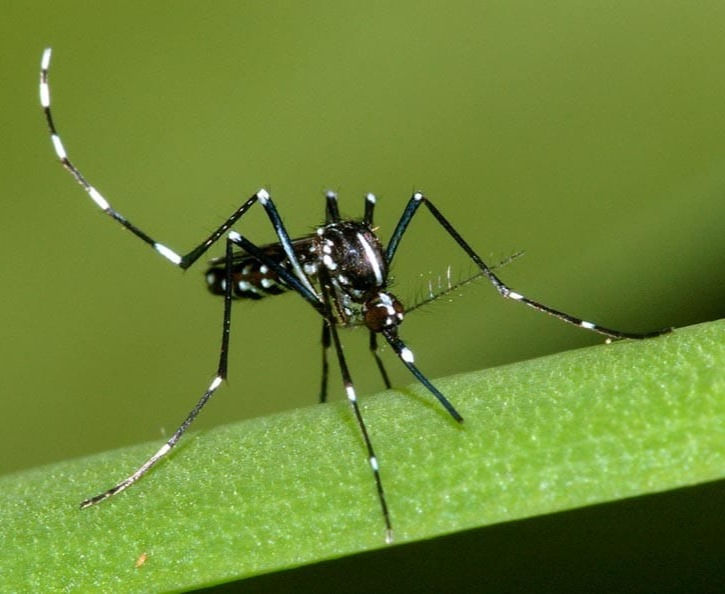Basics of Mosquitoes
- Swati Shrestha
- Oct 14, 2020
- 3 min read
Updated: Nov 13, 2020
Week Four
Lesson 4: Introduction to Mosquitoes
S2L1. Obtain, evaluate, and communicate information about the life cycles of different living organisms.

What are mosquitoes?
- Mosquitoes are small flying insects that survive on the blood of mammals.
- They have a slender body with thin wings, and long legs.
- There are around 3,500 species of mosquito in the world, and 170 of them can be found in the United States. Only about 200 of these species actually bite humans.
- Similar to dragonflies, a mosquitoes life cycle consists of the eggs, larva, pupa and adult stage.
- The length of each stage also depends on the species of mosquito, and temperature.
- For example a common California mosquito (Culex tarsalis) can go through its life cycle in around 14 days at 70 degrees, but can take only 10 days at 80 degrees.
- Other species have adapted to having a life span of 4 days to as long as 1 month.
The Egg Stage

- Eggs are laid in still, shallow water, and are laid in "rafts".
- They float on the surface if water, in numbers of around 200 to 300 eggs per raft.
- Some species prefer to lay their eggs in still water, while others lay them in damp soil that will be flooded by water.
- Most eggs can hatch in 48 hours, but some can hatch after withstanding subzero winters
- When first laid, the eggs are white, but in 24 hours they darken to an almost black color.
The Larva Stage

- Mosquito larvae live underwater, but come up to the surface to breathe.
- Also known as "wigglers" because they use their bodies to propel themselves in a twitching motion.
- They use their tails to breathe.
- Just like dragonflies, they shed or "molt" their skin 4 times, growing larger each time.
- Larvae feed on microorganisms and other aquatic organic matter.
- They are vulnerable to predators such as fish and birds.
- During the fourth molt, the larvae turns into a pupa.
The Pupa Stage

- Pupae are mobile, but this stage is a non-feeding/resting stage of development.
- In this stage, they don't do much except hide in protective areas.
- From the change of a pupa to an adult mosquito, this process is similar to a butterfly's metamorphosis.
- It takes about 2 days most likely during summertime, to complete development and emerge into adulthood.
The Adult Stage

- To turn into an adult, the pupa's skin splits, and the adult emerges out.
- The new adult would rest on the surface of the water to dry off, and let all of its body parts harden. Their wings also have to dry well before first flight.
- Mating, and feeding on blood does not occur until a couple days after emerging to the adult stage.
Click below to watch a short clay animation of a mosquito's life!
Fun Facts!
- Mosquitoes are actually one of the slower flying insects. They move at a speed of 1 to 1.5 miles per hour.
- Their wings beat from 300 to 600 times per second! This is why mosquitoes make that irritating buzzing sound.
- Sometimes, when a male and female meet, they synchronize their wing beats to the same speed.
- Most mosquitoes can only travel up to 2 to 3 miles.
- They can detect carbon dioxide from 75 feet away!
- A mosquitoes proboscis, has actually influenced scientists to design less painful hypodermic needles, to make needle insertion easier.
- Did you know that only females bite? They do this to produce eggs. Both females and males also eat nectar and sugar from other plants as their food. Females only use blood for it's protein and iron to nourish their eggs.
- Their bite causes an irritating itch, and can contribute to spreading many harmful diseases, but we will learn more about that in Lesson 5.

Click on the video to the right to learn a little more about why mosquitoes bite!
How does this relate to the project?
(Go to "Project" tab, for info about the purpose of this project)
- The knowledge of a mosquito's life cycle and their characteristics, will greatly influence the way that the project will be built and carried out.
- For example, knowing that mosquitoes like to breed in still, shallow water, lets us know that the dragonfly habitat will need to be deep, with a water feature of some sort.
- Making a habitat for dragonflies could potentially introduce a habitat for mosquitoes as well, which is a disadvantage to this project.
- But dragonfly nymphs eat mosquito larvae, so the development of mosquitoes should not end up being a problem.
- Most importantly, if dragonflies are introduced to the upcoming habitat first, then it will reduce the risk of an increase in mosquito population.






Comments